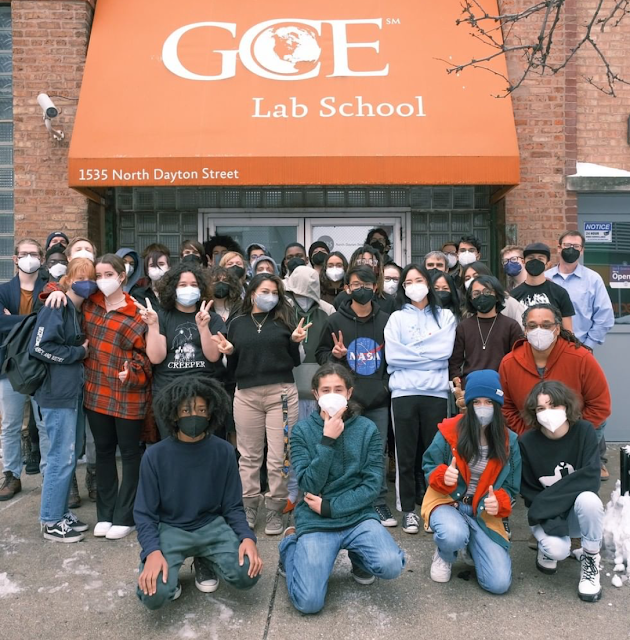Amending for a More Inclusive Society
Sexual harassment and harassment based on sexual orientation or gender identity or expression are not social or courting behaviors. They are unwanted assertions of power by one individual, or group of individuals, over another. Sexual harassment can occur from boys to girls, between boys, between girls, and from girls to boys.
Harassment includes unwanted touching in any form; sexually explicit or suggestive remarks or questions about a person’s physical attributes, clothing, or behavior; sexually stereotyped or sexually charged insults, jokes, gestures, remarks or innuendo; display of sexually explicit, offensive, or demeaning materials, such as photographs, clothing, or calendars; slang names or labels that others find offensive; unwelcome sexual advances or requests for sexual favors; behaviors that constitute dating violence, such as threats or use of physical, sexual, verbal, or emotional abuse; unwelcome digital communication of a sexual nature, including text, email, and social media. Also insidious is the non-targeted use of the language of harassment. Even when not directed at a specific individual, the use of sexual stereotypes or sexually charged insults can be offensive. All these kinds of behavior may occur in private or in front of others in order to demean and embarrass.
Ultimately, students must define for themselves when someone else has been offensive or when “teasing and joking” has gotten out of hand. Our goal is to create an environment in which students, teachers and staff are sensitive to the implications of their language, and where everyone feels comfortable enough to say, “Please don’t say that around me,” or “It upsets me when you do that. Please stop,” and where those who hear this feedback change their behaviors accordingly."
The highlighted portion of this article "Sexual harassment can occur from boys to girls, between boys, between girls, and from girls to boys." is unnecessary as it reduces gender to male/female and is to my knowledge the only portion of the handbook that genders students. Students are consistently referred to with the gender neutral pronoun “they” throughout the document and this passage stands out especially because of that.
A syllogism for this sentence might look something like this:
P: Sexual harassment is a problem that it is important the handbook addresses
P: Students are boys and girls.
P: While it is often thought of as women experiencing sexual harassment from men, sexual harassment can be experienced by men, and from women.
C: Sexual harassment can occur from boys to girls, between boys, between girls, and from girls to boys.
An Ipsos study found that 4% of those in Generation Z identify as transgender and/or nonbinary. In a situation where a nonbinary student was reporting or being accused of harassment the administration would surely not throw their hands up in the air and say that since the person was nonbinary they couldn't do anything. Equally unlikely would be misgendering the student. If a nonbinary student is harassed or harasses someone the student is verbally excluded from this important policy at a moment where they already might be feeling hurt. This is probably written in the way it is to make students feel more comfortable about whatever has happened to them but for some students it will at best have no effect or at worst a negative one.
There is also, I think obviously, the case that this isn’t meant to be taken directly, but instead just to illustrate the fact that anyone is capable of harassment or being harassed. Either way, this portion doesn't directly serve a purpose and it doesn’t need to be there in the form it is.
P: Students have a variety of gender identities.
P: Anyone can be a victim of sexual harassment.
P: There are societal stereotypes around the typical harassment victim and assailant.
C: Students of any gender can experience or commit sexual harassment.
Life at school would probably not directly and visibly change, but it would be good for students to see when they read through. It would have the reassurance that the original part of the handbook is supposed to have to not just students who are boys or girls but to all GCE students regardless of gender.
This amendment relates to the ratified but not in action Equal Rights Amendment or ERA. The Equal Rights Amendment reads “Equality of rights under the law shall not be denied or abridged by the United States or by any state on account of sex”. It doesn’t specifically say men and women must have the same rights, like student handbook, but instead broadly says that rights cannot be denied on account of sex.
I believe that society is worth its salt if it serves to uplift and improve the conditions of all citizens. As it stands the handbook arbitrarily and seemingly without thought excludes nonbinary students. Amending this to be inclusive would be a quick change, and consistent with the rest of the handbook. Nowhere else in it does the handbook refer to students by gender. Gender inclusivity is good for GCE’s “citizens” and my amendment would simply clear up this last contradiction.
AG: The student social contract should be inclusive of all people or else it would be contradicting itself.
AP: I side with this, excluding non binary people in the sexual harassment policy is extremely damaging to victims of any gender and erases their experiences.


Comments
Post a Comment